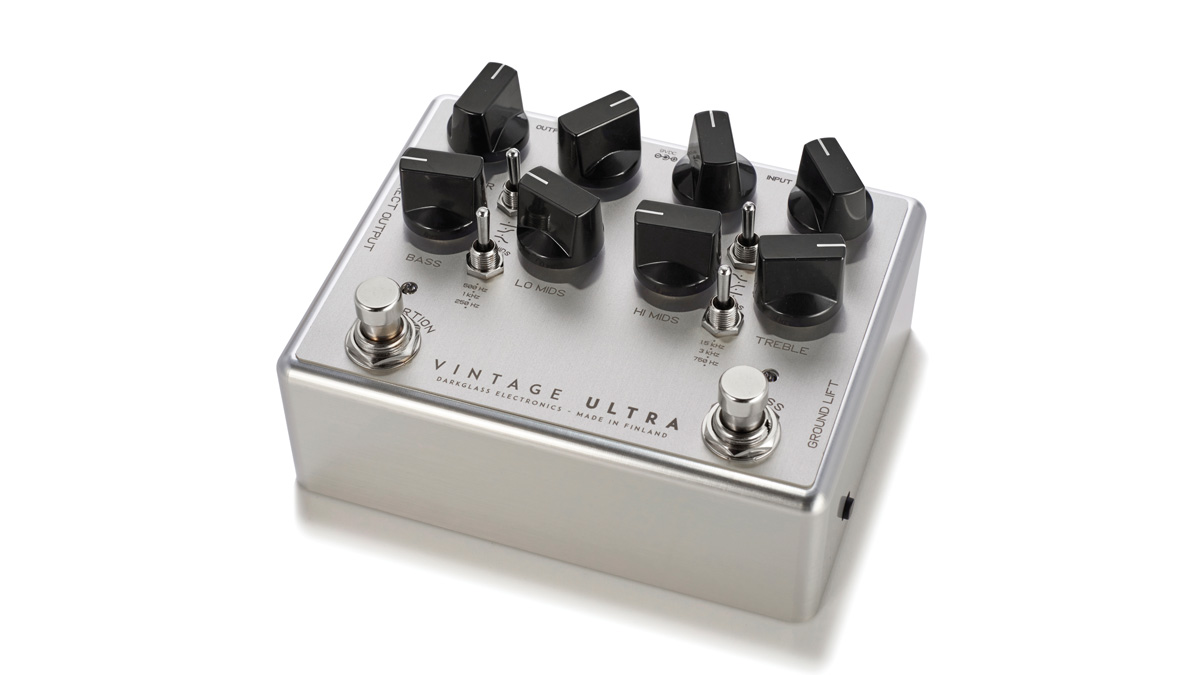MusicRadar Verdict
The Trapper Bass Distortion combines too all-original Fender circuits to great effect, with a performance that could see it become a pedalboard staple for any occasion when you need to dial in some heat and thunder in the lower registers.
Pros
- +
Typically well-designed and thought-out Fender pedal
- +
Two flavours of distortion that can be combined.
- +
Sub level and frequency controls preserves low-end clarity.
- +
Backlit controls.
Cons
- -
Pedal text is hard to read.
MusicRadar's got your back
Fender Trapper Bass Distortion: What is it?
The Trapper Bass Distortion does not need the name Fender on the front to tell us where it comes from. Such as been the success of the Big F’s pedalboard game, that house style of light-up LED controls on the anodized aluminum enclosure and that chassis form is instantly recognisable.
Under the hood, the Trapper – not to be confused with the fuzz pedal that’s marketed principally for electric guitar – is an all-original Fender design, packing two bass distortion circuits into one housing, offering players the option of stacking them or using them individually.
These distortions (Dist 1 and Dist 2), have independent footswitches, dials for Level, Tone and Gain, with the latter featuring a crossover blend circuit that has frequency and sub-level controls that allows you to tidy up and sculpt the low end.
Think “clarity and punch,” that’s how Fender describes it. Dist 1, meanwhile, aka the ‘solo distortion’ circuit, offers some extra oomph.
The Trapper Bass Distortion is true bypass, all-analogue, and takes a 9V DC power supply to get it going.

Fender Trapper Bass Distortion: Performance and verdict
Stepping on Dist 2 is the best place to start and it might take you by surprise – or not – in that it doesn’t automatically turn your bass to industrial fuzz.
At lower gain settings it can add some warmth to your bass tone, sweetening it up, and as you turn the gain up that distortion thickens up nicely without saturating to the point of losing clarity.
Want all the hottest music and gear news, reviews, deals, features and more, direct to your inbox? Sign up here.

• Darkglass Vintage Ultra
There's a range of fuzz tones, from brittle, barely crunchy sounds if you roll off the Blend most of the way and apply judicious amounts of bass, via warm tube grit, to the expected thunderous breakup.
• Darkglass Duality Fuzz Engine
This is the real deal; harmonics sing, there is no loss of bottom end and the pedal works well with both passive and active basses. If you want to bask in rich, fuzzy overtones, search out this little number.
Dist 1, meanwhile, is a little more rambunctious, particularly with the gain goes past noon on the dial, where it things can get quite excited. You could imagine tones like this sitting nicely underneath a Commodores jam, complementing the sheen of the funk guitar. Come three o’clock and it is even more robust.
Combine both circuits and the distortion becomes more three-dimensional, more unruly still, but that’s where you can make use of those sub level and frequency controls to adjust to suit your bass.
There are all kinds of musical situations where this could come in handy. One of the cool things about a distorted bass is that, unlike guitar, it can work in less extreme contexts, giving your tone the rumble that’s needed to contrast with strings or synths. That’s the sort of versatility that the Trapper Bass Distortion offers.
There are more monstrous bass distortion pedals out there, but for a dual-distortion with controls to adapt to different pickups and setups, and the capability to stack both circuits, the Trapper is well worth a shot.
MusicRadar verdict: The Trapper Bass Distortion combines too all-original Fender circuits to great effect, with a performance that could see it become a pedalboard staple for any occasion when you need to dial in some heat and thunder in the lower registers.
Fender Trapper Bass Distortion: The web says
"It sounds pretty immense if low mids are your frequencies of choice, and we love its affordability."
Bass Player Magazine
Fender Trapper Bass Distortion: Hands-on demos
Fender
Nate Navarro
Empire Music
Andertons
Fender Trapper Bass Distortion: Specifications
- MADE IN: China
- FEATURES: Gain, Tone, Level for both circuits, Sub-Bass and Freq controls
- WEIGHT: 0.6lbs
- DIMENSIONS: H, W, D: 4.9” x 3.5” x 1.7”
- POWER: 9V DC power supply
- CONTACT: Fender
MusicRadar is the number one website for music-makers of all kinds, be they guitarists, drummers, keyboard players, DJs or producers...
- GEAR: We help musicians find the best gear with top-ranking gear round-ups and high-quality, authoritative reviews by a wide team of highly experienced experts.
- TIPS: We also provide tuition, from bite-sized tips to advanced work-outs and guidance from recognised musicians and stars.
- STARS: We talk to musicians and stars about their creative processes, and the nuts and bolts of their gear and technique. We give fans an insight into the craft of music-making that no other music website can.

